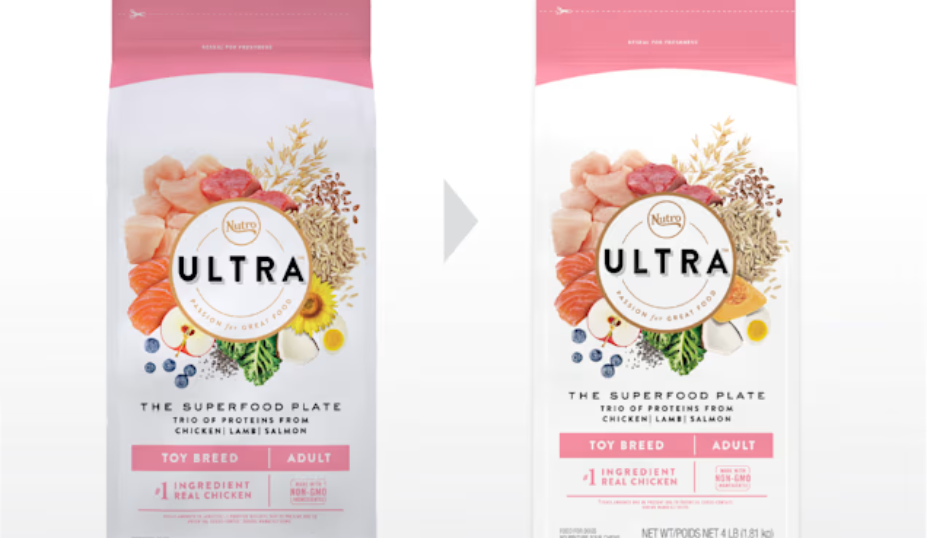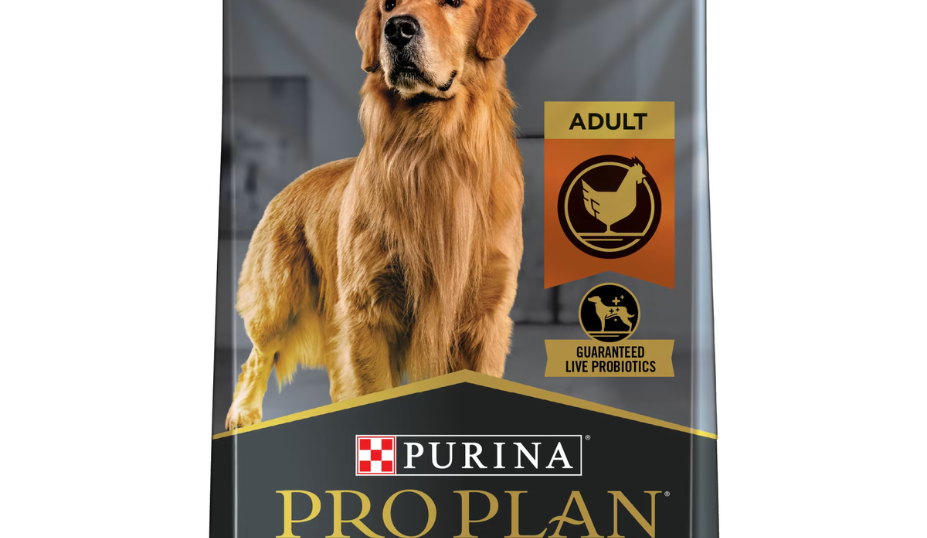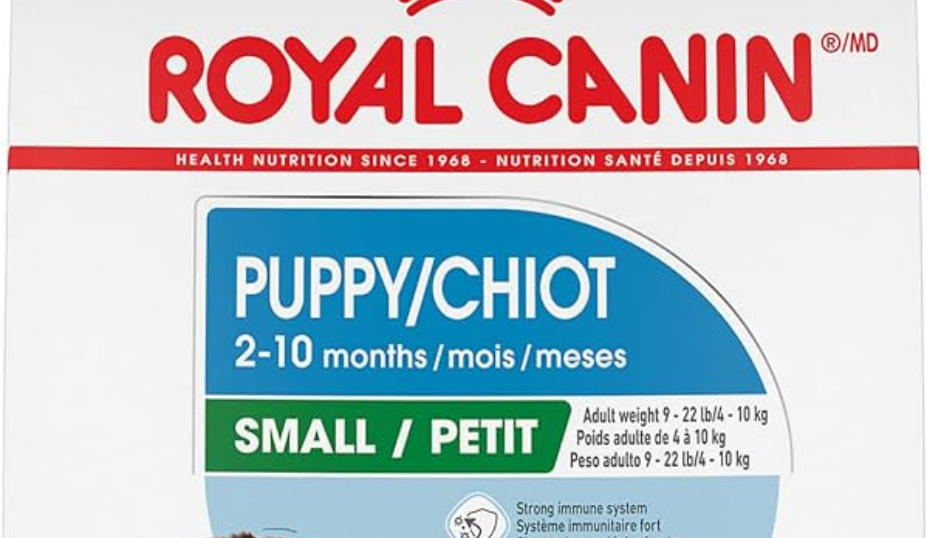The Ultimate Guide to the Best Dog Food 2024
The Ultimate Guide to the Best Dog Food 2024
As we usher in the new year, the quest for the best dog food 2024 becomes a top priority for every pet parent. The importance of picking the right dog food cannot be overstated. It's not just about filling your dog's belly, but more about meeting their unique nutritional needs, promoting general health, and enhancing their quality of life.
The selection of the best dog foods for 2024 is based on several factors, including nutritional value, ingredient quality, brand reputation, and, most importantly, the health of your furry friend.
One product that stands out in the market is the Nutro Ultra Adult Large Breed High Protein Dry Dog Food. As a dedicated pet parent, I have found this product to be a reliable choice for my dog. It offers a balanced diet, packed with high-quality animal protein, essential vitamins, and minerals.
This dog food not only satisfies my dog's appetite but also supports his overall health and vitality. Remember, the best dog food is one that caters to your dog's specific needs, and Nutro Ultra has proven to be a trustworthy choice in this regard.
Understanding Your Dog's Nutritional Needs
Understanding your dog's nutritional needs is a fundamental aspect of responsible pet ownership. Much like humans, dogs require a well-balanced diet to maintain optimal health. Factors such as age, size, fitness, and activity level play a significant role in understanding their nutritional requirements.
Puppies, in particular, need a diet rich in protein as well as fat to support their growth and high energy levels. Conversely, senior dogs, with decreased physical activity and a slowed metabolism, require about 20% fewer total calories than middle-aged adult dogs. Additionally, small breed dogs have distinct nutritional needs compared to large breed dogs, and active dogs necessitate more calories than their less active counterparts.
A balanced diet for dogs encompasses proteins, carbohydrates, fats, vitamins, minerals, and water. Proteins works as the building blocks for body tissues, while fats provide energy and contribute to skin and coat health.
Carbohydrates, derived from plants, power the tissues in a dog's body and promote intestinal health. Essential vitamins as well as minerals support numerous bodily functions, and water, constituting over half of an adult dog's body weight, is of paramount importance.
When choosing dog food, it is crucial to choose a product that offers "complete and balanced nutrition," meeting the standards set by the American Association of Feed Control Officials (AAFCO). This phrase ensures that the food fulfills the nutritional requirements essential for a dog's well-being.
Whether opting for dry or canned dog food, or even preparing homemade meals, ensuring a balanced diet is essential.
It's important to note that the best dog food isn't solely determined by high protein content or the brand's cost. Rather, it involves finding a diet tailored to your dog's individual nutritional needs, contributing to their overall health and well-being.
As a responsible pet parent, understanding these nutritional needs is the initial step toward making informed decisions about your dog's diet.
How to Choose the Best Dog Food
Choosing the right food for your pooch can look like a daunting task with the myriad of choices available. However, understanding some key factors can make this process much simpler and ensure your dog gets the nutrition they need.
Firstly, the importance of high-quality animal protein as the first ingredient cannot be overstated. Dogs, while not strict carnivores, do thrive on a diet rich in animal proteins. These proteins give the essential amino acids needed for muscle development, tissue repair, and overall health.
When scanning the ingredient list on a dog food label, look for named sources of animal protein (like chicken, beef, or salmon) as the first ingredient. This indicates that the food is primarily composed of this high-quality protein source.
Secondly, it's crucial to understand the significance of the AAFCO nutrition standards. AAFCO is a voluntary membership association that establishes standard ingredient definitions and nutritional requirements for pet foods.
A pet food that is AAFCO-approved has met or exceeded these nutritional adequacy standards, ensuring it provides "complete and balanced" nutrition for your pet. While AAFCO does not directly test or certify pet foods, their guidelines are used by pet food companies and third-party testing agencies to ensure the nutritional adequacy of the food.
Finally, learning how to read and understand dog food labels can be a game-changer. The label provides a wealth of information, including the product and brand name, the species the food is intended for, the net quantity, a guaranteed analysis of the nutrient content, the ingredient list, a nutritional adequacy statement, feeding directions, and the name and location of the manufacturer. The ingredients are listed in order of weight, with the heaviest ingredients listed first. This can help you determine the main components of the food and whether it meets your dog's nutritional needs.
Remember, the best dog food for your pet is one that meets their specific needs based on their age, size, breed, and health status. Always consult with your veterinarian if you have any doubts or concerns about your dog's diet.
Top 5 Best Dog Foods 2024
As we navigate through 2024, it's crucial to make sure our dogs are getting the best nutrition possible. Here are five top dog food products that I've found to be exceptional in terms of quality, nutritional value, and overall appeal to our canine companions:
Nutro Ultra Adult Large Breed High Protein Dry Dog Food

This product is specifically tailored for large breeds, featuring a blend of 15 super foods and high-quality animal protein as the first ingredient. It's free from artificial flavors, colors, or preservatives, making it a wholesome option for your pet. However, it may be more expensive than some other brands and may not be suitable for dogs with specific protein allergies.
Pros:
- Tailored for large breeds with a blend of 15 superfoods.
- High-quality animal protein as the first ingredient.
- No artificial flavors, colors, or preservatives.
Cons:
- May be more expensive than some other brands.
- Not suitable for dogs with specific protein allergies.
Ollie Fresh Dog Food

Ollie offers fresh, human-grade ingredients tailored to your dog's nutritional needs. The customizable meal plans and portion sizes, along with the convenience of home delivery, make it a standout choice. However, it requires refrigeration and has a higher price point due to the quality and freshness of ingredients.
Pros:
- Fresh, human-grade ingredients tailored to your dog's nutritional needs.
- Customizable meal plans and portion sizes.
- Subscription service for convenient home delivery.
Cons:
- Requires refrigeration and has a shorter shelf life than dry food.
- Higher price point because of the quality and freshness of ingredients.
Purina Pro Plan Savor Shredded Blend

This product offers a unique combination of crunchy kibble as well as tender, shredded pieces for texture variety. It also includes live probiotics for digestive and immune health. However, it contains grain ingredients, which may not be suitable for dogs with grain sensitivities.
Pros:
- Combination of crunchy kibble and tender, shredded pieces for texture variety.
- Live probiotics for digestive and immune health.
- Wide range of formulas for all life stages and breed sizes.
Cons:
- Contains grain ingredients, which may not be suitable for dogs with grain sensitivities.
- Some formulas may contain poultry by-product meal, which some pet owners prefer to avoid.
Royal Canin Size Health Nutrition

Royal Canin offers specific formulas designed for different dog sizes and breeds, with nutrient profiles tailored to the unique health needs of each size category. However, some recipes may include chicken by-product meal, and the pricing is premium compared to some other kibble options.
Pros:
- Specific formulas designed for different dog sizes and breeds.
- Nutrient profiles tailored to the unique health needs of each size category.
- Kibble size as well as shape are adapted to the dog's jaw structure.
Cons:
- Some recipes may include chicken by-product meal.
- Premium pricing compared to some other kibble options.
The Farmer's Dog Food

This brand offers customized, pre-portioned servings of fresh food delivered to your door. The recipes are developed by veterinarians and made with human-grade ingredients. However, it requires a subscription and is more expensive than traditional kibble. It also needs to be stored in the freezer or refrigerator.
Pros:
- Customized, pre-portioned servings of fresh food delivered to your door.
- Recipes are developed by veterinarians and made with human-grade ingredients.
- No preservatives or fillers, and food is cooked at low temperatures to preserve nutrients.
Cons:
- Requires a subscription and is more expensive than traditional kibble.
- Needs to be stored in the freezer or refrigerator.
As a pet parent, I've experienced firsthand the benefits of these high-quality foods. Each product has its unique advantages, and it's vital to weigh the pros as well as cons based on your dog's specific needs, preferences, and any dietary restrictions they may have. Always consult with your veterinarian to ensure the food you choose is the best fit for your dog's unique nutritional requirements.
Things to consider while buying best dog food
When looking for the best dog food, there are some key factors to consider:
Balanced Nutrition: The best dog food should provide balanced nutrition, using high-quality ingredients. This includes a mix of meat, vegetables, grains, and fruits. High-quality versions of these ingredients are more appropriate for your dog’s digestive system.
- High-Quality Animal Protein: The first ingredient listed should be a high-quality animal protein, such as chicken, beef, fish, or pork. Dogs, while not strict carnivores, do thrive on a diet rich in animal proteins.
- Nutritional Needs: The best dog food for your dog companion should meet his nutritional requirements. While most commercial food brands are particularly formulated with at least the minimum nutritional needs for dogs, it is significant to remember that not every dog has exactly the same nutritional needs.
- AAFCO Approval: Brands that meet all nutritional requirements by the Association of American Feed Control (AAFCO) ensure that your pet will have all the nutrients for their life stage.
- Veterinarian Recommendation: Your veterinarian understands your dog's specific requirements and can provide valuable guidance on selecting the right dog food. They can consider factors like age, breed, size, activity level, and any health conditions in order to recommend an appropriate diet.
- Ingredient List: Since this will be the main source of your dog's nutrition, it's important to understand what's in the food. Look for named sources of animal protein, and avoid foods with artificial colors, flavors, or preservatives.
- Brand Reputation: Consider the brand's history, including any recalls or controversies. Brands with a long-standing popularity for quality and safety are generally a safer bet.
Remember, the best dog food for your pet is one that meets their specific needs based on their age, size, breed, and health status. Always consult with your veterinarian if you have any doubts or concerns about your dog's diet.
How to transition a dog to a new dog food brand?
Transitioning your furry friend to a new dog food brand should be done gradually to avoid gastrointestinal upset such as vomiting, diarrhea, and a decreased appetite. Here's a step-by-step guide to help you switch your dog's food smoothly:
- Day 1-2: Start by mixing approximately 25% of the new food with 75% of your dog's current food.
- Day 3-4: Increase the new food to 50% and reduce the old food to 50%.
- Day 5-6: Mix 75% of the new food with 25% of the old food.
- Day 7: Completely transition to the new food, serving 100% of the new brand.
During this transition, it's important to monitor your dog for any changes in appetite or stool quality. If you notice any concerning signs, such as vomiting or diarrhea, you may need to slow down the transition process.
Some dogs with sensitive stomachs may require an even longer transition period. Remember, every dog is different, and some may need a faster or slower transition phase. Commitment and consistency are key when transitioning your dog to a new pet food brand. If you have any questions or if your dog is particularly sensitive, it's best to consult with your veterinarian
What are the benefits of feeding a dog a homemade diet?
Feeding your dog a homemade diet can have several benefits:
- Control Over Ingredients: With homemade dog food, you have control over what goes into each meal. You can incorporate higher-quality ingredients, such as more protein or dog-safe fruits and vegetables. This also allows you to avoid ingredients your dog may be allergic to or that you prefer to exclude from their diet.
- Tailored Nutrition: A homemade diet can be individualized to provide the appropriate calories and nutrients for your dog’s age, body weight, and health issues. This is particularly beneficial for dogs with specific dietary needs or health conditions.
- Variety: Homemade diets can provide a variety of ingredients, making mealtime more interesting for your dog. Most dogs can tolerate some variety or at least subtle variations of food.
- Bond-Building: Preparing a home-cooked meal for your dog can be a rewarding encounter that strengthens your bond with your pet.
- Avoiding Recalls: Making your own dog food can help avoid the risk associated with commercial dog food recalls.
However, it's important to note that creating a balanced homemade diet for your pooch can be challenging. Dogs need a balance of protein, carbohydrates, fats, vitamins, and minerals, and it's crucial to get the proportions right to ensure your dog's diet is nutritionally complete.
It's recommended to consult with a board-certified veterinary nutritionist when creating a custom recipe for your dog.
What are the common ingredients in homemade dog food?
Common ingredients in homemade dog food include:
- Protein Sources: These are essential for your dog's diet. Common sources include chicken, turkey, beef, lamb, and certain types of fish like salmon and whitefish. It's important to remove bones, fat, and skin from these protein sources before serving.
- Fats and Fatty Acids: These come from animal fats and plant seed oils. They support the function as well as structure of cells, keep skin plus coat healthy, and increase the taste of the food. Sources of fatty acids comprise plant-based oils, like corn, soybean, canola, flaxseed oil, as wellas fish oil.
- Carbohydrates: CAnines get some of their energy from carbohydrates, which comprise sugars, starches, and dietary fibers. Common sources include rice, pasta, oatmeal, and quinoa.
- Fiber: Fiber is important for a dog's gastrointestinal health and can help prevent them from getting overweight. Good sources of fiber for pooches include carrots, pumpkin, apples, dark leafy greens, brown rice, and flaxseed.
- Vitamins and Minerals: These are essential for a dog's overall health. Common sources include dairy products (for calcium and iodine), eggs (for zinc), lamb and liver (for zinc), brewer’s yeast (for zinc), meat and vegetables (for selenium), seafood and brown rice (for selenium), and whole grains and seeds (for copper).
- Water: While not an ingredient in the food itself, it's important to always provide your dog with fresh, clean water.
When preparing homemade dog food, it's important to ensure that the diet is balanced and fulfills all of your dog's nutritional needs. It's recommended to consult with a veterinarian or a pet nutrition expert when creating a homemade diet for your dog.
FAQs
What makes a dog food "good"?
A good dog food should have high-quality versions of meat, vegetables, grains, and fruits that are appropriate for your dog's digestive system. It should also meet your dog's nutritional needs, which can vary depending on factors like age, breed, size, and activity level.
What are the benefits of commercial dog food?
Commercial dog food is convenient, consistent, and undergoes a process of quality control and inspection to catch any contaminants or pathogens. It's formulated to meet dogs' nutritional needs for proteins, fats, carbohydrates, vitamins, and minerals.
How can I tell if a dog food meets my pet's nutritional needs?
You can determine if a food fulfills your pet’s nutritional requirements by looking at the nutritional adequacy statement on the label. Any good dog food will meet the AAFCO nutrition standards.
What are the advantages of homemade dog food?
Homemade dog food lets you to control the ingredients, provide tailored nutrition, and avoid the risk associated with commercial dog food recalls. However, it requires dedication, work, and potentially significant expense to ensure the food meets your dog's nutritional needs.
What are common ingredients in homemade dog food?
Common ingredients in homemade dog food include protein sources (like meat, seafood, dairy, or eggs), fat (from meat or oil), carbohydrates (grains or vegetables), calcium (from dairy or egg shells), and essential fatty acids (from certain plant oils, egg yolks, oatmeal, and other foods).
How can I transition my dog to a new dog food brand?
Transitioning your pooch to a new dog food brand should be done gradually over a period of about a week to avoid gastrointestinal upset. Start by mixing a small quantity of the new food with the old, gradually increasing the proportion of the new food over time.
Conclusion
As we wrap up our exploration of the best dog foods of 2024, it's clear that the journey to finding the perfect meal for our canine friends is as diverse as the dogs themselves. From the tailored nutrition of Nutro Ultra Adult Large Breed High Protein Dry Dog Food to the fresh, human-grade offerings of Ollie Fresh Dog Food, the options are both abundant and varied.
Reflecting on the insights from industry experts and the latest consumer reviews, it's evident that the best dog food is not a one-size-fits-all solution. The ideal choice must align with our pets' unique needs, considering their breed, age, activity level, and any specific health concerns.
As a pet owner, I encourage you to delve into the world of dog nutrition with a curious and informed mindset. Embrace the guidance of veterinarians and nutritionists, and don't shy away from scrutinizing labels and ingredient lists. Remember, the well-being of our furry companions is in our hands, and the food we choose plays a pivotal role in their health and happiness.
In the ever-changing landscape of canine nutrition, where new research and products emerge continuously, staying informed is key. As we move forward, let's commit to providing our dogs with the best nutrition possible, ensuring they live their best lives by our sides.





.jpg)



Comments